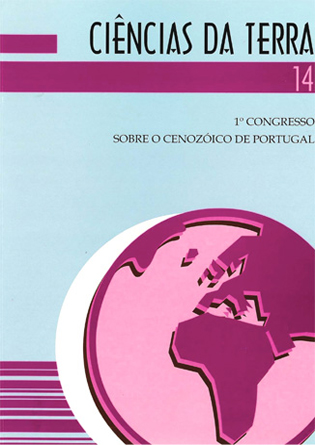Miocene sediments from Foz da Fonte and Penedo sections (Lower Tagus basin): clay minerals and isotopic data
Abstract
Key-words: Clay minerals; Isotopic data; Miocene; Lower Tagus Basin; Paleoenvironmental reconstruction. Eight depositional sequences (OS) delimited by regional disconformities had been recognized in the Miocene of Lisbon and Setúbal Peninsula areas. In the case of the western coast of the Setúbal Peninsula, outcrops consisting of Lower Burdigalian to Lower Tortonian sediments were studied. The stratigraphic zonography and the environmental considerations are mainly supported on data concerning to foraminifera, ostracoda, venebrates and palynomorphs. The first mineralogical and geochemicai data determined for Foz da Fonte, Penedo Sui and Penedo Norte sedimentary sequences are presented. These analytical data mainly correspond to the sediments' fine fractions. Mineralogical data are based on X-ray diffraction (XRD), carried out on both the less than 38 μm and 2 μm fractions. Qualitative and semi-quantitative determinations of clay and non-clay minerals were obtained for both fractions. The clay minerals assemblages complete the lithostratigraphic and paleoenvironmental data obtained by stratigraphic and palaeontological studies. Some palaeomagnetic and isotopic data are discussed and correlated with the mineralogical data. Multivariate data analysis (Principal Components Analysis) of the mineralogical data was camed out using both R-mode and Q-mode factor analysis.Downloads
Published
2009-05-21
Issue
Section
Articles






